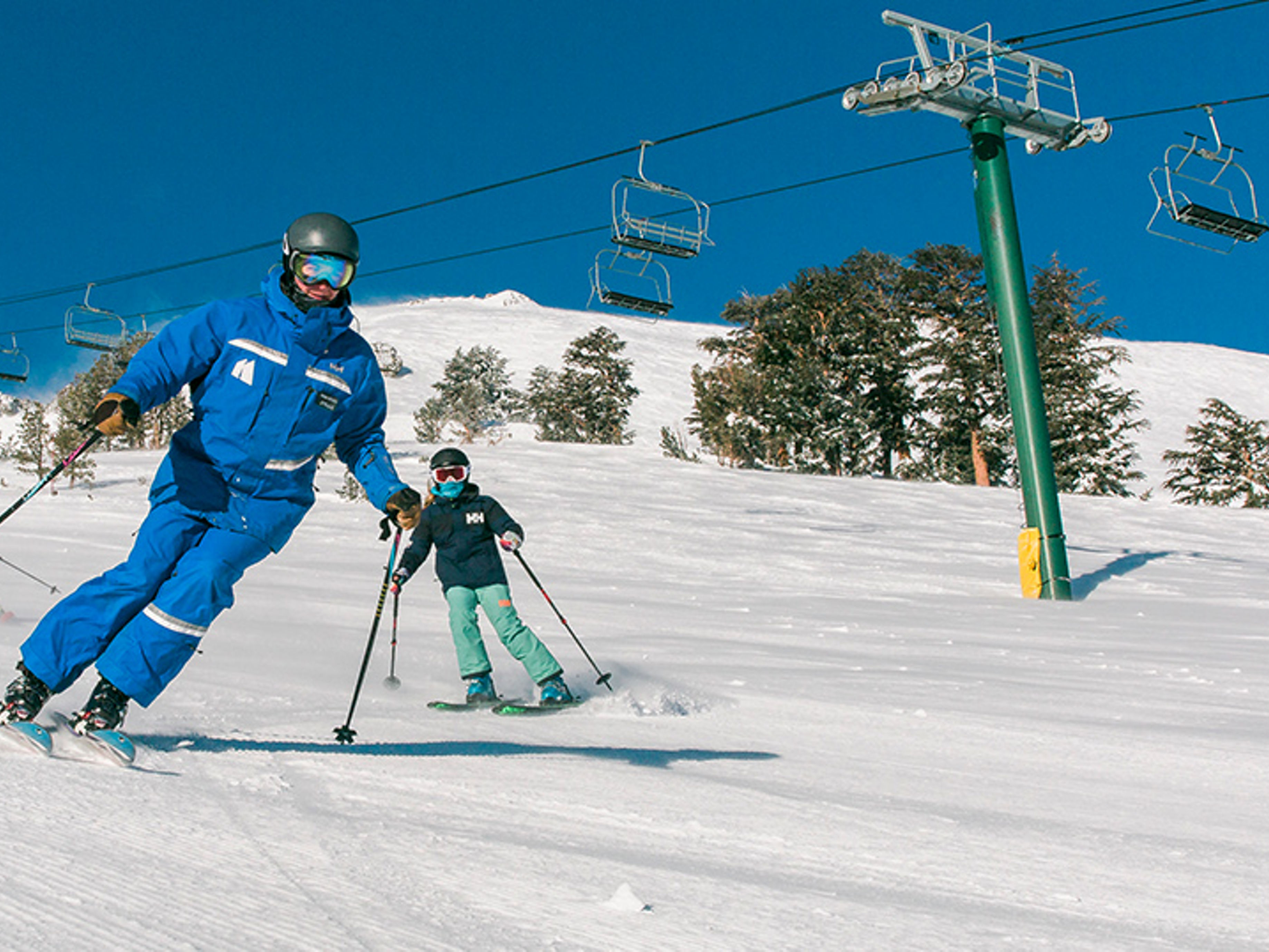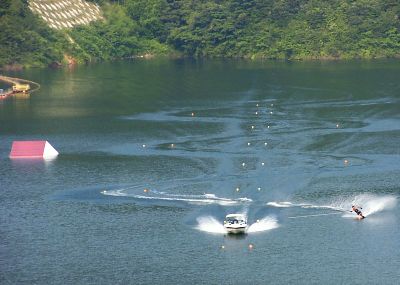
A ski lesson will teach you the basics of skiing. You can sign for a single lesson or a full week. It can be a fun experience for your kids and they will love spending time with their friends.
Ski lessons offer many benefits, including the following:
The most obvious benefit is that it will teach your child how to be safe on the slopes. Instructors can guide them and ensure they know the safety rules. They will be able show them how to safely merge onto trails and avoid dangerous situations.

They will also be able to help your child learn the fundamentals of snowplough turns and how to control their speed. These skills will help them progress from the beginner zone to more advanced runs on the mountain.
This will allow your child to ski down the hill safely and confidently. They can either take lessons on their own, or with friends. This is a great opportunity to get them comfortable with the sport.
Another advantage of a ski lesson, is the ability to try out different techniques and determine what works best for yourself. You will be able to practice your technique with your instructor at every session.
A ski lesson will also help to prevent injuries, especially for your knees. This is due to the fact that instructors will have a lot knowledge on how to properly set your equipment to match your skier's ability.

Lastly, a ski lesson will also give you the chance to try different terrains and conditions on the hill. This will increase your confidence on all slopes. It is particularly useful in bad weather.
It can be costly to take a ski lesson, but it will pay off in long term. You will have more fun and be able spend more time on the pistes than sitting in a chair.
A ski lesson should be taken no less than once a winter. However, lessons can be taken throughout the year. If you're new to the sport it is a good idea to take a few lessons and then increase your confidence.
FAQ
How can I travel light and how do I get there?
When packing for a trip, there is no right or wrong answer. These are some suggestions to help you pick the right items to take on your trip.
-
Only bring what you need.
-
Only bring what you plan to actually wear.
-
Don't buy too many.
-
Make sure you have room in your suitcase.
-
Double-check everything that you have packed.
-
You can take advantage of our free storage facilities
-
Use reusable water containers instead of buying bottled water.
-
Instead of carrying a suitcase, use a backpack.
-
Walk or cycle whenever possible instead of using public transport.
-
Choose the right size bag.
-
Avoid carrying heavy items.
-
Prepare for anything.
-
Leave nothing behind.
What's the first thing you should do when you arrive at your travel destination?
An itinerary is essential for every trip. This will help you plan what to do and where to go next.
Plan ahead to make sure you don't overlook anything.
For example, if you're going to be visiting a city for more than one day, you should research which museums, parks, and landmarks you'd like to visit.
You might also want to get a map and learn more about the history of the region.
Do you ever worry that you might forget something when you travel?
Yes, I often forget stuff. This is especially true when I am on a short vacation. Fortunately, I always bring everything I need, so I don't run out.
For instance, I always carry my passport with me. And I always check whether I have enough money when I buy tickets.
Also, my phone charger is always with I. A small bag is also handy for storing other items.
How long does it take between two countries to fly?
The distance between the airports as well as the weather conditions can affect the time it takes to fly.
It takes approximately 3 hours to fly.
The actual flying time depends on many factors like the airline, aircraft type and airport delays.
What snacks can you take on a plane with you?
You have many options for snacks to take with you when flying. Consider bringing any foods you like while on the road.
You might pack chocolates or other sweet treats, such as crisps, biscuits, and nuts.
Perhaps you want something savory? You could pack some crackers or cheese.
You should also consider what kind of drinks you would like to have on board. Perhaps you like hot or cold beverages?
You can bring any type of snack or beverage, but make sure you pack them securely.
This way, you won't need to worry about them getting damaged during travel.
What should you never forget when traveling?
You will find yourself in situations that leave you with very little time for making decisions when you travel. You should be ready to improvise.
It is possible to be stuck anywhere for hours, days or even weeks. If you plan ahead, you will have food, water and shelter. But if you haven't, you may have to improvise.
In these cases you will need to rely on your best skills. It means you have to be able to quickly make decisions based upon your experience and instinct.
But there are times when you can't choose. Sometimes, however, you will have to make do with what you have. You'll need to adapt quickly to these situations.
Keep calm, be focused, and take action. Don't panic. Instead, try to focus on the things that you can control.
You can, for example, choose the direction you want to travel if you get lost in the woods. You can also eat berries and mushrooms if you feel hungry. You can also drink rainwater and melt snow if you feel thirsty.
You can also rest if you are tired. You can wrap up if you're cold. You can wear a sweater if it's cold. No matter what you do, it will make you feel better to stay positive.
My luggage should be stored where it is safe.
There are many options. One of the most popular options is to use airport lockers. They are generally located near security. They cost between $5-10 per day, depending on the locker size.
You can also rent a storage space. These units are often located in large shopping centers or hotels. Prices vary, but some places offer discounts for multiple units rented together.
Another option is to hire porters. A porter will help carry your luggage from the carousel to your room. Each time he assists you, a small fee will be charged.
Statistics
- According to Maori legends, this park holds 14 fjords that were all carved by a giant stonemason with an adze. (busytourist.com)
- You can use compression sacs or cubes to reduce the volume of your clothes by up to 80%—this is especially convenient for bulky items such as sweaters and jackets. (eaglecreek.com)
- Alcoholic beverages with 24% alcohol or less are not subject to limitations in checked bags. (tsa.gov)
- Pack sweaters, jackets, and underwear in reusable compression bags creating up to 75% more space in your luggage. (wikihow.com)
- Between the ages of 11 and 13, kids, or tweens, will likely want some autonomy but also need boundaries. (travelandleisure.com)
External Links
How To
How to plan for your next vacation
Planning a trip includes many things such as booking flights, hotels and car rentals. It also includes important considerations such as budget, schedule, destination, weather forecast, etc.
You should always remember these points while planning your next vacation.
To ensure you get everything right, we have created a step-by-step guide to help you plan your next vacation. This guide has been prepared based on our experience and customer feedback. We hope that you will find the following guide useful in planning your next vacation.
Steps:
-
Plan your Budget. This is one of the most important steps to prepare for a trip. Before you can start planning where and what you will do, you must first know how much you are willing to spend. You might have to cancel your plans if you don't have enough money.
-
Book Your Flights. After you have decided on your budget, book your tickets. Find the best price and lowest flight deal. Also, check if airlines offer any special deals during certain seasons. These deals can save you lots of money.
-
Select Your Destination - After you have booked your flight, you will need to choose where you want to travel. Multiple factors come into play when choosing your destination, including location (where you're going), climate (what season to visit), culture (how friendly people are), and cost (how affordable it is).
-
Find Accommodations - After choosing your destination, the next step would be finding accommodations. There are many choices for accommodation. You can choose from affordable hostels or luxury suites. The type of accommodation you choose will depend on your preferences and needs. If you are looking for somewhere close to the center of the city, a hotel might not be the best option. You may prefer quieter areas away from the crowds and a homestay could be better suited for your needs.
-
Select Activities & Attractions: Now that you have selected your accommodation, it is time to decide which activities and attractions to include in the itinerary. Depending on the length of your stay, you can either choose only a few activities or add several new ones throughout your trip.
-
Select Activities and Attractions - Now it's time for you to plan your itinerary. A fixed schedule will ensure that you get the best value for your trip. However, if you're free to move around at your convenience, you can enjoy your trip even more.
-
You can create an itinerary by creating itineraries. These information can include flights, accommodations, activities and restaurants. You will need to record them all and make a list.
-
Research Online - Before leaving for your trip, research online so you won't miss anything. Review and read testimonials to learn what travelers have to say about a destination. This will help you plan.
-
Take care when packing. Too many clothes is not a good idea. Do not bring more than three sets of clothes. You should bring clothing that suits the conditions.
-
Be Prepared - Finally, be prepared! Before you leave for your trip, make sure that everything is in order. Do not waste your time looking for important documents when you are in transit.